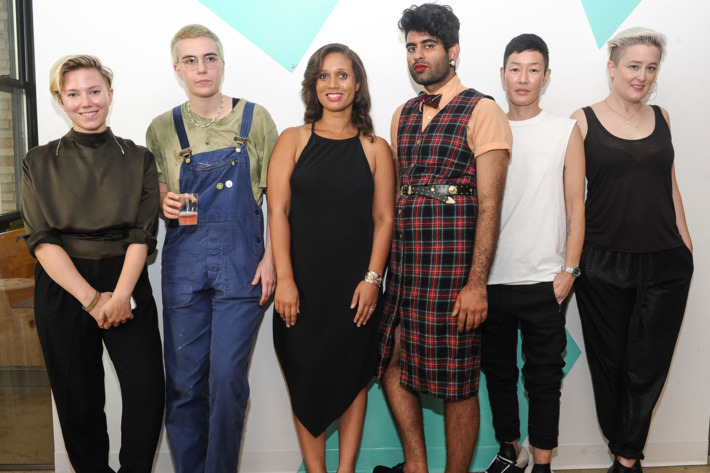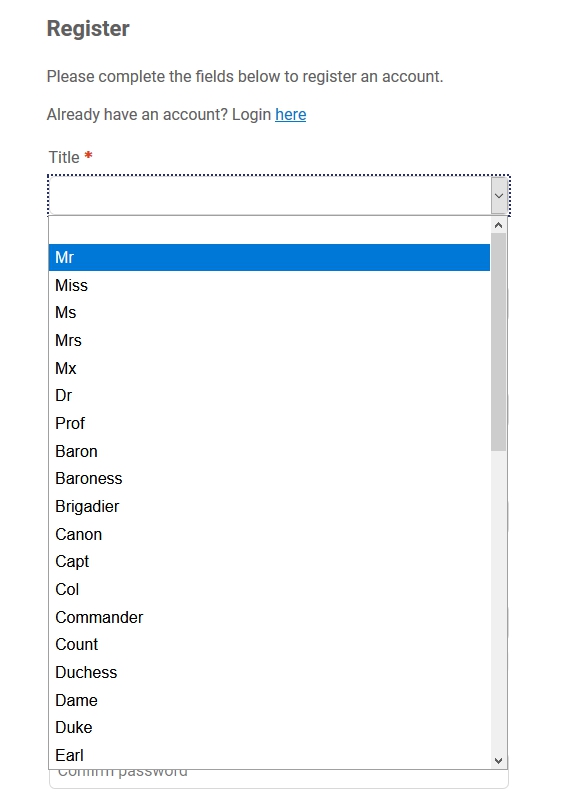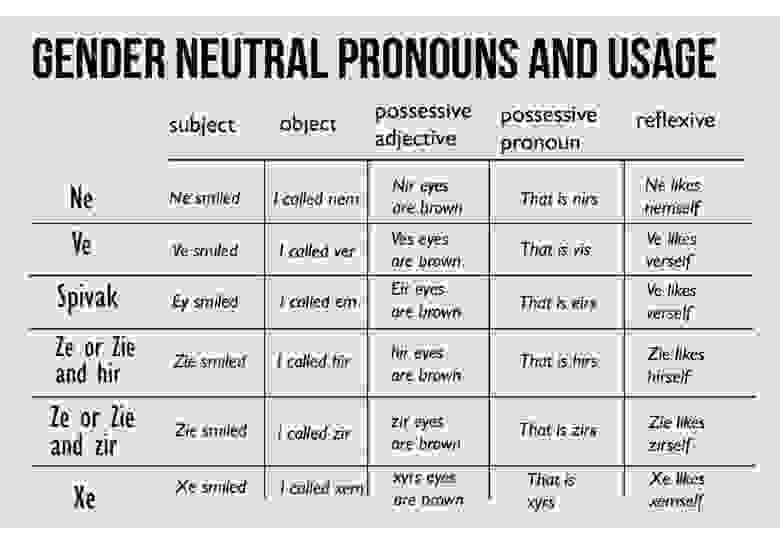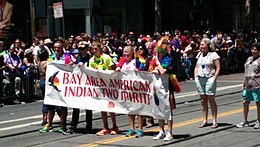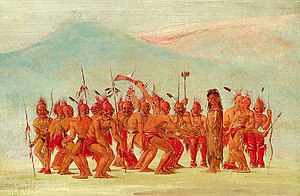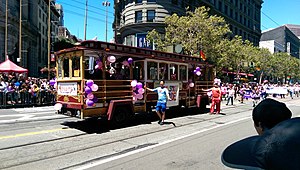Ту спирит что это гендер
Новые возможности для гендерквиров и ту-спиритов
Американские пользователи социальной сети Facebook отныне смогут выбирать из 50 вариантов гендерной идентичности: таким образом, к «женскому» и «мужскому» вариантам пола добавятся «бигендер» «транссексуал», «андрогин» и многое другое. Об этом сообщает ВВС.
Кроме того, в разделе «управление страницей» на выбор пользователей соцсети можно будет установить одно из местоимений для их упоминания в новостной ленте: «его/ему», «её/ей», или «им/их».
Интернет-гигант проработал с ЛГБТ-активистами все варианты наименований. При этом Facebook, естественно, позволит более чем миллиарду своих пользователей по всему миру сохранять свою гендерную идентичность в тайне.
На данный момент неизвестно, когда 50 вариантов гендера станут доступны участникам соцсети, зарегистрированным за пределами США. Напомним, что с некоторых пор американские пользователи Facebook могут отмечать свой социальный статус как «состоящий в однополом браке», для этого были разработаны и специальные иконки, изображающие двух невест или двух женихов. Первым их опробовал «опробовал» в своем профиле из основателей Facebook Крис Хьюз, который является открытым геем и состоит в браке с бизнесменом и ЛГБТ-активистом Шоном Элдриджем, заявлявшем о намерении баллотироваттся в Конгресс. Однако в русскоязычном варианте их семейній статус отображается следующим образом:
Интересно, что инженер и программистка Бриелле Харрисон, которая была ответственной за разработку для Facebook новых «гендерных возможностей» с технической точки зрения, сама является транссексуалкой и говорит, что отныне множество пользователей сети, подобных ей, получат возможность заявлять в онлайне о своей истинной гендерной идентичности.
«Очень часто трансгендерные люди, такие как я, иди другие гендерные нонконформисты сталкиваются с тем, что, отвечая на вопрос о гендерной принадлежности, вынуждены выбирать лишь из двух опций: мужчина или женщина. Это удручает, потому что мы не имеем возможности заявить о том, кто мы такие на самом деле», – поделилась Харрисон своими размышлениями с агентством АР. Теперь Харрисон, которая проходит процедуры по коррекции пола, сможет выбрать опцию «трансгендерная женщина» и установить ее в своем профиле. По словам Бриелле, для многих юзеров подобная возможность ровным счетом ничего не означает, однако для многих других она невероятно важна.
Президент Гей-лесбийского Альянса против клеветы GLAAD Сара Кейт Эллис похвалила Facebook за это важное начинание, отметив, что эта социальная сеть снова стала лидером в области признания и соблюдения интересов своих ЛГБТ-пользователей. Рад нововведению и Мэйсен Дэвис, исполнительный директор юридического центра по защите прав трансгендеров, который заявил: «Мы аплодируем Facebook за то, что они предоставили людям возможность заявить о своем истинном «я» в сети».
Создатель Facebook Марк Цукерберг со своими сотрудниками на ЛГБТ-прайде в Сан-Франциско
Некоторые из 50 вариантов гендера для Facebook
Маленький словарь гендерных терминов
Недавний документальный фильм CBSN «Gender | The Space Between» (Гендер | Межпространство) заставил зрителя погрузиться в сложности гендерной идентичности и гендерного самовыражения.
В последнее время транссексуальные люди становятся все более видимыми и все чаще появляются в прессе и на телевидении. И это замечательно. Однако гендерный спектр в целом рассматривается как нечто ограниченное. Социум продолжает ориентироваться на то, что в мире есть только два «полюса»: мужчина и женщина. Многие не хотят понимать, что на самом деле гендерная шкала куда шире, и различные гендерные термины и градации им недоступны.
Гендерная идентичность — очень личная часть того, кем мы являемся, кем себя чувствуем, как себя воспринимаем и как самовыражаемся. С сексом, строением тела или сексуальной ориентацией это мало соотносится: пересечения, конечно, есть, однако наш «биологический макияж» или люди, которые нас привлекают, — отдельный предмет разговора.
В связи с тем, что о гендерных вопросах стали рассуждать куда чаще, появилось большое количество новых терминов, которыми люди описывают себя в зависимости от гендерной самоидентификации. Данная сфера лингвистики динамично развивается. Мы же хотим предложить нечто вроде небольшого ликбеза. Конечно, охватить весь гендерный словарь в одной публикации не получится, однако и эти определения помогут разобраться в том, насколько многослойным является само понятие гендера.
Агендер (аgender)
Этим термином называют себя люди, чья гендерная идентичность не соответствует ни мужской, ни женской, ни любой другой. Иными словами, агендеры вообще не видят себя на гендерной шкале. В качестве синонима иногда употребляется термин «гендерно нейтральный» (gender-neutral).
Андрогин (аndrogynous)
С гендерной точки зрения это человек, который презентует и/или идентифицирует себя как личность, которую не отличают ни выраженные женские, ни выраженные мужские черты. Часто андрогинами называют людей, обладающих внешностью, при визуальной оценке которой сложно или невозможно определить их половую принадлежность. Однако не забывайте, что внешность и гендер — понятия, относящиеся к совершенно разным категориям.
Бигендер (bigender)
Самоопределение человека, который идентифицирует себя как личность, которой присущи как женские, так и мужские черты. Некоторые бигендеры полагают, что женские проявления в них сильнее мужских, или наоборот. Другие говорят, что и то и другое присутствует в них поровну. Но присутствует обязательно.
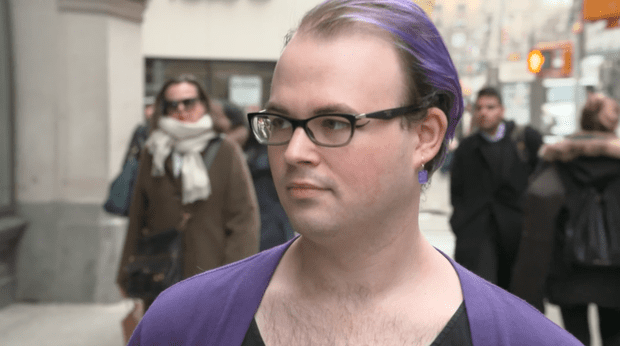
Гендерная дисфория (gender dysphoria)
Гендерная дисфория, или же расстройство гендерной идентичности, определяет состояние транссексуальности, при котором человек не может принять свой гендерный статус как мужчины или женщины в соответствии с полом, полученным при рождении.
В Международной классификации болезней (нормативном документе ВОЗ) 11-го пересмотра, которая должна вступить в силу в следующем году, весь блок «Расстройства половой идентификации (трансгендерность)» заменен на «Gender incongruence» (гендерное несоответствие). Кроме того, в этом документе гендерная дисфория больше не значится в разделе «Психические и поведенческие расстройства» и будет перенесена в блок «Сексология». Людям, страдающим от гендерной дисфории, назначаются процедуры по коррекции пола.
Гендерное самовыражение (gender expression)
Внешний вид человека, который через стиль поведения, одежду, прическу, манеру общения выражает свою гендерную идентичность. Гендерное самовыражение может соответствовать или не соответствовать социальным нормам и характеристикам мужского или женского поведения.
Гендер-флюид (gender fluid)
«Fluid» по-английски — жидкость, следовательно, речь идет о «текучести», изменчивости.
Гендер-флюид не идентифицирует себя с одним и тем же полом постоянно: его гендерные ощущения смещаются или меняются в зависимости от социального контекста. В отличие от бигендеров, в которых присущие мужчинам и женщинам характеристики в разной степени наличествуют всегда, гендер-флюиды могут ощущать себя то мужчинами, то женщинами, то обладателями черт обоих полов.

Гендерная идентичность (gender identity)
Концепция принятия личностью себя как мужчины, женщины, бигендера и т.д. Как люди себя воспринимают, так они себя и называют. Гендерная идентичность может совпадать с физическим полом, а может от него отличаться, порой с точностью до наоборот.
Гендерная неконформность (gender non-conforming)
Термин, широко использующийся в отношении людей, которые своим поведением «не оправдывают» традиционных ожиданий, связанных с их половой принадлежностью, или же их гендерное самовыражение не вписывается в некие общепринятые категории.
Задающийся гендерными вопросами, сомневающийся (gender questioning)
Человек, который находится в процессе гендерной самоидентификации и не до конца определившийся со своими гендерными ощущениями.
Гендерквир (genderqueer)
Этим термином называют себя люди, отвергающие представления о статичных гендерных категориях, которые принимают «текучесть» гендерной идентичности и часто, хотя и не вседа, сексуальной ориентации.

Гендерквиры могут рассматривать себя как мужчин, как женщин или как тех, кто не подпадает под эти категории. При этом физический пол человека — врожденный или приобретенный в результате коррекции — значения не имеет. К примеру, гендерквиром называет себя солистка панк-группы Against Me! Лора Джейн Грейс, родившаяся и большую часть жизни прожившая мужчиной, которая несколько лет тому назад совершила камин-аут как транссексуалка и прошла процесс гендерной трансформации.
Квир (queer)
Зонтичный термин, который в широком смысле все чаще используется в отношении людей, принадлежащих к ЛГБТ+ сообществу. При этом еще раз напомним, что гендерную идентичность к сексуальной ориентации жестко привязывать нельзя.
«Мертвое имя» (dead name)
Точного аналога этого термина в русском языке не существует. В английском словами «birth name» характеризуется имя, полученное при рождении. Однако многие трансгендерные люди, родившиеся, как принято говорить, «в чужом теле», по очевидным причинам не любят свое «birth name», поскольку часто оно не соответствует их гендерной идентичности. Именно поэтому называют его «dead name».
Мисгендер (misgender)
Характеристика ситуации, когда человека называют местоимениями, не соответствующими его гендерной идентичности или полу, с которым он себя отождествляет. В некоторых языках это местоимения третьего лица («он», «она»), в других только ими дело не ограничивается. К примеру, в иврите аналоги местоимения «ты» имеют как женский, так и мужской род.
Небинарность (non-binary)
Любая гендерная идентичность, которая не вписывается в бинарную (двоичную) систему координат мужчина/женщина.
Переход (transition)
В английском языке слово «transition» имеет множество значений, в том числе и «перерождение». Этот термин используется в отношении транссексуальных людей и обозначает процесс гендерной трансформации: грубо говоря, смену пола, полученного при рождении, на тот, с которым человек себя идентифицирует. Впрочем, «переход» — это не только медицинские процедуры, но и социальная адаптация в желаемой гендерной роли, а также нормативно-правовое оформление документов.
Пол (sex)
В данном случае речь идет о физической половой принадлежности, полученной при рождении. У младенцев ее определяют по внешнему виду гениталий и анатомическому строению.
Трансгендер (transgender)
Еще один зонтичный термин, использующийся в отношении людей, чья гендерная идентичность и/или самовыражение отличается от культурных и социальных ожиданий, связанных с полом. Более узкий термин, транссексуал, употребляется в отношении тех, чей пол, который был записан в свидетельстве о рождении, не соответствует психологическому — вне зависимости от того, совершил этот человек переход или нет.
Многие этого слова не любят, полагая, что понятие «транссексуальность» имеет ярко выраженную клиническую окраску и ассоциируется с временами, когда людей, страдающих от гендерной дисфории, считали психически больными.
Ту-спирит (two-spirit)
Дословно «two-spirit» переводится как «обладатель двух духов» или же душ. Часто употребляется в отношении гендерквиров — представителей коренного населения Америки, а также других наций и племен, где такие люди почитались и считались особенными.
Цисгендер (сisgender)
Термин, использующийся в отношении людей, чья гендерная идентичность соответствует физическому полу, полученному при рождении. Проще говоря, цисгендер — это антоним слова трансгендер. Цисгендерный человек (как и трансгендерный) может быть гетеро, би- или гомосексуальным, главное, что он полностью соотносит себя со своей «врожденной» половой принадлежностью.
На фото в заголовке статьи: Брендан Джордан, 17-летний ю-тьюбер, идентифицирующий себя как гендер-флюид
Two-Spirit
Two Spirit is a culturally distinct gender that describes Indigenous North Americans who fulfils one of many mixed gender roles found traditionally among many Native Americans and Canadian First Nations indigenous groups. The mixed gender roles encompassed by the term historically included wearing the clothing and performing the work associated with both men and women.
This English term emerged in 1990 out of the third annual inter-tribal Native American/First Nations gay/lesbian American conference in Winnipeg. A direct translation of the Ojibwe term, Niizh manidoowag, «two-spirited» or «two-spirit» is usually used to indicate a person whose body simultaneously houses a masculine spirit and a feminine spirit. The term can also be used more abstractly, to indicate presence of two contrasting human spirits (such as Warrior and Clan Mother) or two contrasting animal spirits (which, depending on the culture, might be Eagle and Coyote). However, these uses, while descriptive of some aboriginal cultural practices and beliefs, depart somewhat from the 1990 purposes of promoting the term.
According to Brian Joseph Gilly, male berdachism «was a fundamental institution among most tribal peoples.» Will Roscoe writes that male and female berdaches have been «documented in over 130 tribes, in every region of North America, among every type of native culture.»
The term berdache was coined by western anthropologists and used until the late 20th century, mainly to describe feminine Native Americans assigned male at birth. The term is however inaccurate and can nowadays be considered offensive.
Non-natives who use this identity are often accused of «appropriating Native culture.»
Как трансы и гендеры меняют английский язык
Политкорректность в мире достигла своего пика. В США и Европе проходят «мирные» протесты, в ходе которых протестующие «лутают» магазины и сносят памятники. А люди с XX и XY хромосомами обижаются, если называть их «девочками» и «мальчиками» соответственно.
Естественно, социальные и политические события ставят свой отпечаток и на развитии языка. Сегодня английский язык меняется просто с невообразимой скоростью. Буквально за последние 10 лет политкорректность стала чуть ли не главным мировым трендом.
В этой статье мы проанализируем, как именно политическая ситуация в мире меняет английский язык. Готовы? Поехали!
Краткий гендерный экскурс
Начнем с гендерного вопроса. Все больше стран и юрисдикций признает, что существует больше чем два пола и нельзя делить общество только на мужчин и женщин.
Изначально вопрос был поднят только из физиологической точки зрения. Самый первый случай официального принятия «третьего пола» был в Австралии в 2003 году, когда человек с генной мутацией в судебном порядке доказал, что его нельзя назвать ни мужчиной, ни женщиной.
Для зануд: у него (или нее) был синдром Клайнфельтера, когда в геноме вместо двух половых хромосом есть три — XXY.
В Европе, в особенности в Германии, где активно внедряли политику абсолютной толерантности, этот случай получил широкий резонанс. Но если с однополыми браками законодательно вопрос решался более активно — в целом были понятны требования гомосексуалистов и то, как их законодательно выполнить, то с небинарным гендером все было сложнее.
По данным ООН, интерсексуалы составляют от 0,5 до 1,3% всего населения земли, что немало. То есть, в мире есть от 38 до 100 млн людей, которые идентифицируют себя иначе, чем мужчины и женщины.
Мы не будем сейчас пытаться объяснять различия между агендером, бигендером, гендерфлюидом и еще рядом гендеров. В законодательной сфере они все обычно собираются в понятие «genderqueer», которое значит «особый пол». Кстати, само слово появилось в 2008 году с подачи британских СМИ.
Сегодня «третий пол» имеет официальный статус в Германии, Великобритании, Нидерландах, Австрии, Канаде и еще ряде азиатских стран. В США пока что все сложно, но в пяти штатах уже разрешили выдавать документы, где указан пол Х.
Постепенно социально-политические вопросы стали изменять и языки. Разберем наиболее острые проблемы английского языка, которые с ними связаны.
Mr, Mrs, Miss или Mx? Гендерно-нейтральные обращения в действии
Что может быть оскорбительного в обычном обращении? Оказывается, очень даже может по мнению интерсексуалов.
В английском языке ранее не было распространенных обращений для небинарных гендеров. Собственно, в каком-нибудь XIX веке не было и самого понятия небинарных гендеров. Обращения были вполне обычные.
Mr, Mister — Мистер, для мужчин
Mrs, Missis — Миссис, для замужних женщин
Miss — Мисс, для незамужних женщин
Обращаться можно было также и по титулу или званию. То есть, Lord или Professor тоже вполне допустимое обращение. Но не так давно стало популярным еще одно обращение:
Оно применяется к небинарным людям и трансгендерам. Потому что в нем нет обозначения половой принадлежности.
Само гендерно-нейтральное обращение появилось еще в 1970 году, но популяризовать его стали британцы не так давно. В 2014 году Королевский банк Шотландии официально включил это обращение как официальное при переписке. Чуть позже обращение Mx стала использовать Королевская почта. Более того, в 2015 году его стали использовать на официальном уровне в государственных учреждениях. К примеру, в официальной корреспонденции Палаты общин, Министерства труда и пенсий, Управления по налоговым и таможенным сборам и Национальной службы здравоохранения.
В том же 2015 году обращение «Mx» было включено в Оксфордский словарь английского языка.
То есть, если вы ведете официальную переписку с британскими компаниями или государственными учреждениями, то вполне возможно, что в письмах к вам будут обращаться Mx. Даже если ваш пол будет известен. Уже были прецеденты, когда за обращение Mister или Miss подавали в суд, потому что человек идентифицирует себя как-то иначе.
Впрочем, некоторые компании относятся к этому тренду с исключительно английским юмором. К примеру, на сайте RailCard, где можно купить билеты на британский железнодорожный транспорт, во время регистрации вас попросят указать, как к вам обращаться. И там целых 44 варианта!
Кроме стандартных Mr, Mrs, Miss и нового Mx, там можно найти титулы Baron, Duke и Lord, статусные обращения Rt Hon и Hon, профессиональные Her Honour, His Honour, Judge и Prof, а также религиозные Prebendary, Rabbi, Sister, Canon и много других. Можно выбрать на любой вкус.
Никаких «he» и «she», Или немного о гендерно-нейтральных местоимениях
С местоимениями же сложнее, чем с обращениями. Потому что в современном английском нет местоимений, которые можно было бы использовать как гендерно-нейтральные. Не «it» же, в самом деле.
Наиболее популярен сегодня следующий вариант:
We have a new teacher. They will come tomorrow.
У нас новый учитель. Они придут завтра.
«They» — это по сути замена обычных местоимений «she» и «he». То есть, таким способом отмечают человека, который определяет себя иначе чем «мужчина» или «женщина».
Несмотря на то, что тенденция стала актуальна всего в последние 5 лет, само определение местоимения «They» в качестве нейтрального местоимения единственного числа далеко не ново.
В далеком 1795 году группа ученых, среди которых были лингвисты Линди Мюррей, Джозеф Пристли и Хью Блэйр предложили использовать «they» как общее местоимение третьего лица единственного числа. То есть, оно должно было объединять «he» и «she». И хоть тогда инициатива не нашла большого числа сторонников, сейчас же этот вариант снова набирает популярности. Несмотря на то, что звучит он необычно, он имеет под собой лингвистические предпосылки.
Среди других исторических попыток «найти» гендерно-нейтральное местоимение, нужно выделить также работы Уильяма Маршалла, который в 1789 году обнаружил в исторических хрониках диалектное местоимение «Ou».
«Ou» одновременно обозначает сразу три местоимения — «he», «she» и «it», отдельно не выделяя никакой из них. Предположительно, это слово было создано писателем и переводчиком Джоном Тревиза в XIV веке.
«Ou» — это по сути редуцированная форма местоимений мужского и женского рода «he» и «heo», которые использовались в староанглийском и среднеанглийском. Эти две формы были практически неотличимы по произношению, поэтому в устном виде могли обозначать как мужчину, так и женщину. А местоимение «she», которое появилось примерно в середине XII века, было попыткой хоть как-то разделить местоимения по звучанию. То есть, исторически уже существовало слово, которое обозначает нейтральный гендер. Почему его не используют сейчас — непонятно. Возможно, «they» всего лишь более привычный вариант.
Еще один лингвист Роберт Бейкер в 1770 году предложил использовать местоимения «one, ones» вместо «one, his». По его мнению, отсутствие аналога «one, hers» было не слишком честным, поэтому он предложил нейтральный вариант. Правда, его идею посчитали излишне педантичной. Тем не менее, она «всплывала» в качестве референсов много раз, но каждый раз была признана неактуальной. Ждем следующего раза в ближайшее время.
В недавнем времени также было несколько искусственных попыток создать гендерно-нейтральные местоимения. Но выглядят они, честно говоря, нелепо.
Вот таблица с возможными вариантами гендерно-нейтральных местоимений. В современном английском это апокриф — то есть, канонными нормами языка они не являются. Но есть организации, которые активно продвигают их использование. Если тенденции с расширением прав и возможностей небинарных людей усилятся, то вполне возможно, что через 5-10 лет такие варианты появятся и в официальном английском.
По сути подобные искусственные конструкции претендуют на оригинальность, но при этом довольно топорны и не имеют никакой лингво-культурной подоплеки. И судя по тому, что они так и не получили даже минимального распространения, эти варианты так и останутся концептами.
Английский язык — это постоянно развивающаяся система. И любые социально-политические изменения оставляют в языке свой отпечаток. Расскажите, а что вы думаете о подобных тенденциях? Пишите в комментарии.
Онлайн-школа EnglishDom.com — вдохновляем выучить английский через технологии и человеческую заботу
Только для читателей Хабра первый урок с преподавателем по Skype бесплатно! А при покупке занятий получите до 3 уроков в подарок!
Получи целый месяц премиум-подписки на приложение ED Words в подарок.
Введи промокод gendereng на этой странице или прямо в приложении ED Words. Промокод действителен до 09.07.2021.
Two-spirit
Two-Spirit (also two spirit or, occasionally, twospirited) is a modern, pan-Indian, umbrella term used by some Indigenous North Americans to describe Native people in their communities who fulfill a traditional third gender (or other gender-variant) ceremonial and social role in their cultures. [1] [2] [3]
The term two-spirit was created in 1990 at the Indigenous lesbian and gay international gathering in Winnipeg, and «specifically chosen to distinguish and distance Native American/First Nations people from non-Native peoples.» [4] The primary purpose of coining a new term was to encourage the replacement of the outdated and considered offensive, anthropological term, berdache. [5] While this new term has not been universally accepted—it has been criticized as a term of erasure by traditional communities who already have their own terms for the people being grouped under this new term, and by those who reject what they call the «western» binary implications, such as implying that Natives believe these individuals are «both male and female» [4] —it has generally received more acceptance and use than the anthropological term it replaced. [6] [5] [7]
«Two Spirit» was not intended to be interchangeable with «LGBT Native American» or «Gay Indian»; [2] rather, it was created in English (and then translated into Ojibwe), to serve as a pan-Indian unifier, to be used for general audiences instead of the traditional terms in Indigenous languages for what are actually quite diverse, culturally-specific ceremonial and social roles, that can vary quite widely (if and when they exist at all). [1] [2] [4] Opinions vary as to whether or not this objective has succeeded. [4] [8] The decision to adopt this new, pan-Indian term was also made to distance themselves from non-Native gays and lesbians, [9] as the term and identity of two-spirit «does not make sense» unless it is contextualized within a Native American or First Nations framework and traditional cultural understanding. [3] [10] [11] However, the gender-nonconforming, LGBT, or third and fourth gender, ceremonial roles traditionally embodied by Native American and FNIM people, intended to be under the modern umbrella of two-spirit, can vary widely, even among the Indigenous people who accept the English-language term. No one Native American/First Nations’ culture’s gender or sexuality categories apply to all, or even a majority of, these cultures. [4] [8]
It is important to remember that a Indigenous person being nonbinary does not automatically make that person Two-Spirit, and that someone can be Two-Spirit without being nonbinary. [12]
Contents
Terminology [ edit | edit source ]
Origin and evolution of the term two-spirit [ edit | edit source ]
The term two spirit was adopted in English, and created in Ojibwe, in 1990 at the third annual Native American/First Nations gay and lesbian conference in Winnipeg, Manitoba, Canada, as a replacement for berdache. [4] The decision to adopt this new, pan-Indian term was deliberate, with a clear intention to distance themselves from non-Native gays and lesbians, [9] as well as from non-Native terminology like berdache, «gay», «lesbian», and «trans». [6] [9]
Cameron writes, «The term two-spirit is thus an Aboriginal-specific term of resistance to colonization and non-transferable to other cultures. There are several underlying reasons for two spirited Aboriginals’ desire to distance themselves from the mainstream queer community.» [13] Lang explains that for Aboriginal people, their sexual orientation or gender identity is secondary to their ethnic identity. She states, «at the core of contemporary two-spirit identities is ethnicity, an awareness of being Native American as opposed to being white or being a member of any other ethnic group». [9]
While the words niizh manidoowag (from Ojibwe) were also proposed at the same time in this discussion (to honor the language of the Peoples in whose territory the conference was being held), this term had not been previously used, in either Ojibwe or English, until this conference in 1990, nor was this term ever intended to replace the traditional terms or concepts already in use in Native ceremonial cultures. [4]
While it has gained far more mainstream recognition and popularity than any of the traditional terms in Indigenous languages, the term has never met with universal acceptance. [4] The primary purpose of coining a new term was to encourage the replacement of the outdated, and offensive, anthropological term berdache, which means «passive partner in sodomy, boy prostitute.» [6] [5] [7]
While use of the term to replace berdache proceeded, the word also began to replace tribally-specific terms and cultural teachings, leading to criticism, largely from more traditional members of Indian Country,
Other concerns about this pan-Indian, English-language term have centered around the binary nature of two-spirit, a sense not found in the traditional names for these individuals or their roles in traditional cultures,
It is unclear who first coined the term two-spirit in English. Pember notes the involvement of non-Native Will Roscoe who, like his also non-Native mentor Harry Hay, is involved in the hippie/counterculture gay men’s group, the Radical Faeries, [14] a «non-Native community that emulates Native spirituality» and engages in other forms of cultural appropriation. [15]
| « | Non-Native anthropologist Will Roscoe gets much of the public credit for coining the term two spirit. However, according to Kristopher Kohl Miner of the Ho-Chunk Nation, Native people such as anthropologist Dr. Wesley Thomas of the Dine or Navajo tribe also contributed to its creation. (Thomas is a professor in the School of Dine and Law Studies.) [6] | » |
Even at the series of conferences where the term was gradually adopted (1990 being the third of five), concern was expressed by a number of the Native attendees that traditional Natives back in the reservation communities would never agree to this newly-coined concept, or adopt the neologism being used to describe it. [16]
| « | At the conferences that produced the book, Two-Spirited People, I heard several First Nations people describe themselves as very much unitary, neither «male» nor «female,» much less a pair in one body. Nor did they report an assumption of duality within one body as a common concept within reservation communities; rather, people confided dismay at the Western proclivity for dichotomies. Outside Indo-European-speaking societies, «gender» would not be relevant to the social personae glosses «men» and «women,» and «third gender» likely would be meaningless. The unsavory word «berdache» certainly ought to be ditched (Jacobs et al. 1997:3-5), but the urban American neologism «two-spirit» can be misleading. [16] | » |
At the same time, others saw it as a capitulation to urbanization and loss of culture that, while initially intended to help people reconnect with the spiritual dimension of these roles, was not working out the way it had been intended. In 2009, writing for the Encyclopedia of Gender and Society, Kylan Mattias de Vries wrote,
With the urbanization and assimilation of Native peoples, individuals began utilizing Western terms, concepts, and identities, such as gay, lesbian, transgender, and intersex. These terms separated Native cultural identity from sexuality and gender identity, furthering a disconnect felt by many Native American/First Nations peoples in negotiating the boundaries of life between two worlds (Native and non-Native/Western). The term two-spirited was created to reconnect one’s gender or sexual identity with her or his Native identity and culture.
Since historically, many «berdache/two-spirit» individuals held religious or spiritual roles, the term two spirit creates a disconnection from the past. The terms used by other tribes currently and historically do not translate directly into the English form of two spirit or the Ojibwe form of niizh manidoowag. [4]
While some have found the term a useful tool for intertribal organizing, «the concept and word two-spirit has no traditional cultural significance». [4] Not all tribes have ceremonial roles for these people, and the tribes who do usually use names in their own languages. [18] [5]
Traditional Indigenous terms [ edit | edit source ]
Contemporary issues [ edit | edit source ]
The increasing visibility of the two-spirit concept in mainstream culture has been seen as both empowering and as having some undesirable consequences, such as the spread of misinformation about the cultures of Indigenous people, pan-Indianism, and cultural appropriation of Indigenous identities and ceremonial ways among non-Natives who do not understand that Indigenous communities see two-spirit as a specifically Native American and First Nations cultural identity, not one to be taken up by non-Natives. [8] [13]
These sort of simplified black-and-white depictions of Native culture and history perpetuate indiscriminate appropriation of Native peoples. Although the current new meme or legend surrounding the term two spirit is certainly laudable for helping LGBTQ people create their own more empowering terminology to describe themselves, it carries some questionable baggage. My concern is not so much over the use of the words but over the social meme they have generated that has morphed into a cocktail of historical revisionism, wishful thinking, good intentions, and a soupçon of white, entitled appropriation. [8]
Two-spirit does not acknowledge either the traditional acceptance or the nonacceptance of individuals in various nations and tribes. The idea of gender and sexuality variance being universally accepted among Native American/First Nations peoples has become romanticized.
Accordingly, the change from berdache to two-spirit is most accurately understood as a non-Native idealization of the social acceptance of gender variance, idealizing a romanticized acceptance of gender variance. [4]
For First Nations people whose lives have been impacted by the Residential Schools, and other Indigenous communities who have experienced severe cultural damage from colonization, the specific two-spirit traditions in their communities may have been severely damaged, fragmented, or even lost. [13] In these cases there have been serious challenges to remembering and reviving their older traditional ways, and to overcoming the homophobia and other learned prejudices of forced assimilation. [13]
When Indigenous people from communities that are less-accepting of two-spirits have sought community among non-Native LGBT communities, however, the tendency for non-Natives to tokenize and appropriate has at times led to rifts rather than unity, with two-spirits feeling like they are just another tacked on initial rather than fully included. [13]
The term two-spirited was chosen to emphasize our difference in our experiences of multiple, interlocking oppressions as queer Aboriginal people. When non-Aboriginal people decide to «take up» the term two-spirit, it detracts from its original meaning and diffuses its power as a label of resistance for Aboriginal people. Already there is so much of First Nations culture that has been exploited and appropriated in this country; must our terms of resistance also be targeted for mainstream appropriation and consumption? Two-spirited is a reclaimed term designed by Aboriginals to define our unique cultural context, histories, and legacy. When people do not see the harm in «sharing» the term, they are missing the point and refusing to recognize that by appropriating the term they will inevitably alter its cultural context. [13]
In academia, there has since 2010 or earlier been a move to «queer the analytics of settler colonialism» and create a «twospirit» critique as part of the general field of queer studies. [8] [46] However, much of this academic analysis and publishing is not based in traditional indigenous knowledge, but in the more mainstream, non-Native perspectives of the broader LGBT communities, so most of the same cultural misunderstandings tend to be found as in the outdated writing of the non-Native anthropologists and «explorers». [8] Claiming a viewpoint of «postidentity» analysis, supporters of «queer of color critique» aim to examine settler colonialism and the ongoing genocide of Native peoples while «queering Native Studies». [46] However, Indigenous identity is predominantly cultural, rather than a racial classification. [47] It is based on membership in a particular community, cultural fluency, citizenship, and Native American and First Nations people may or may not even consider themselves to be «people of color». [47]
Definition and societal role in Indigenous communities [ edit | edit source ]
Male-bodied two-spirit people, regardless of gender identification, can go to war and have access to male activities such as male-only sweat lodge ceremonies. [48] However, they may also take on «feminine» activities such as cooking and other domestic responsibilities. [49] According to Lang, female-bodied two-spirit people usually have sexual relations or marriages with only females. [50]
Two-spirit societies [ edit | edit source ]
Among the goals of two-spirit societies are group support; outreach, education, and activism; revival of their Indigenous cultural traditions, including preserving the old languages, skills and dances; [10] and otherwise working toward social change. [51]
Some two-spirit societies (past and present) include: 2Spirits of Toronto in Toronto, Ontario; the Wabanaki Two Spirit Alliance in Nova Scotia; the Bay Area American Indian Two-Spirits (est. 1998) in San Francisco, California; [52] Central Oklahoma Two Spirit Natives in Oklahoma City; the East Coast Two Spirit Society and the NorthEast Two-Spirit Society in New York City; Idaho Two-Spirit Society; the Indiana Two-Spirit Society in Bloomington, Indiana; Minnesota Two Spirits; the Montana Two-Spirit Society in Browning, Montana; the Northwest Two-Spirit Society in Seattle, Washington; the Ohio Valley Two Spirit Society of Ohio, Indiana, Kentucky, and Southern Illinois; [53] [54] the Portland Two Spirit Society (est. May 2012) in Portland, Oregon; [55] the Regina Two-Spirited Society in Regina, Saskatchewan; the Texas Two Spirit Society in Dallas; the Tulsa Two-Spirit Society in Tulsa, Oklahoma; the Two-Spirit Society of Denver in Denver, Colorado; and the Wichita Two-Spirit Society in Wichita, Kansas. [51] [56] [57] [58]
Historical and anthropological accounts [ edit | edit source ]
Unfortunately, depending on an oral tradition to impart our ways to future generations opened the floodgates for early non-Native explorers, missionaries, and anthropologists to write books describing Native peoples and therefore bolstering their own role as experts. These writings were and still are entrenched in the perspective of the authors who were and are mostly white men. [59]
According to German anthropologist Sabine Lang, cross-dressing of two-spirit people was not always an indicator of gender identity. Lang believes «the mere fact that a male wears women’s clothing does not say something about his role behavior, his gender status, or even his choice of partner». [60]
Historically, the presence of male-bodied two-spirits «was a fundamental institution among most tribal peoples», according to Brian Gilley [61] and, according to non-Native anthropologist Will Roscoe, both male- and female-bodied two-spirits have been documented «in over 130 North American tribes, in every region of the continent». [62] However, Ojibwe journalist Mary Annette Pember argues that this depiction threatens to homogenize diverse Indigenous cultures, painting over them with an overly broad brush, potentially causing the disappearance of «distinct cultural and language differences that Native peoples hold crucial to their identity». [8]
Don Pedro Fages was third in command of the 1769–70 Spanish Portolá expedition, the first European land exploration of what is now the U.S. state of California. At least three diaries were kept during the expedition, but Fages wrote his account later, in 1775. Fages gave more descriptive details about the native Californians than any of the others, and he alone reported the presence of homosexuality in the native culture. The English translation reads:
Although gender-variant people have been both respected and feared in a number of tribes, they are not beyond being reproached or, by traditional law, even killed for bad deeds. In the Mojave tribe, for instance, they frequently become medicine persons and, like all who deal with the supernatural, are at risk of suspicion of witchcraft, notably in cases of failed harvest or of death. There have been instances of murder in these cases (such as in the case of the gender-nonconforming female named Sahaykwisā). [64] Another instance in the late 1840s was of a Crow badé who was caught, possibly raiding horses, by the Lakota and was killed. [65]
Lang and Jacobs write that historically among the Apache, the Lipan Apache people, Chiricahua, Mescalero, and southern Dilzhe’e have alternative gender identities. [66] [67] One tribe in particular, the Eyak, has a single report from 1938 that they did not have an alternative gender and they held such individuals in low esteem, although whether this sentiment is the result of acculturation or not is unknown. [68]
Among the Iroquois, there is a single report from Bacqueville de la Potherie in his book published in 1722, Histoire de l’Amérique septentrionale, that indicates that an alternative gender identity exists among them. [69]
Many, if not all, Indigenous cultures have been affected by European homophobia and misogyny. [70] [71] Some sources have reported that the Aztecs and Incas had laws against such individuals, [72] though there are some authors who feel that this was exaggerated or the result of acculturation, because all of the documents indicating this are post-conquest and any that existed before had been destroyed by the Spanish Empire. [73] The belief that these laws existed, at least for the Aztecs, comes from the Florentine Codex, and that evidence exists that indigenous peoples authored many codices, but the Spaniards destroyed most of them in their attempt to eradicate ancient beliefs. [74]
Some contemporary Zapotec peoples in Mexico embody the traditional third gender role known as muxe. They consider themselves to be «muxe in men’s bodies,» who do the work that their culture usually associates with women. When asked by transgender researchers in 2004 if they ever considered surgical transition, «none of the respondents found the idea interesting, but rather strange» as their essence as muxe is not dependent on what type of body they are in. [75]
Berdache [ edit | edit source ]
Use of berdache has now been replaced in most mainstream and anthropological literature by two spirit, with mixed results. However, the term two spirit itself, in English or any other language, was not in use before 1990. [4]
Media representation [ edit | edit source ]
In the 1970 film Little Big Man, the Cheyenne character Little Horse, portrayed by Robert Little Star, is a gay man who wears clothing more commonly worn by women in the culture. He invites the protagonist, Jack Crabb (Dustin Hoffman) to come live with him. In a departure from most portrayals in Westerns of the era, Crabb is touched and flattered by the offer.
The 2009 documentary film [83] Two Spirits, directed by Lydia Nibley, tells the story of the hate-murder of 16-year-old Navajo Fred Martinez. In the film, Nibley «affirms Martinez’ Navajo sense of being a two spirit ‘effeminate male’, or nádleeh«. [1] Template:Rp Martinez’ mother defined nádleeh as «half woman, half man». [1] Template:Rp
The film Two Spirits, shown on Independent Lens in 2011, and winner of the annual Audience Award for that year, is about two-spirit people, particularly Fred Martinez, who was murdered at age 16 for identifying as a two-spirit. [84] [85]
In 2017 two-spirited Métis filmmaker Marjorie Beaucage released a Coming In Stories: Two Spirit in Saskatchewan as way to raise awareness about the experiences of two-spirited individuals living in Saskatchewan, Canada. [86] [87]
In the 2018 indie film, The Miseducation of Cameron Post, a Lakota character – Adam Red Eagle, played by Forrest Goodluck – is sent to a conversion camp for identifying as winkte and two-spirit. [88]
In the 2019, second season of American Gods, Kawennáhere Devery Jacobs (Mohawk) plays a young Cherokee woman, Sam Black Crow, who self-identifies as «two-spirited». Her character, raised by a white mother and estranged from her Native father, speaks of looking to older ancestors to try to find her own beliefs, much like the other humans in the series. In an interview she says, «I identify as queer, and not two-spirited, because I’m Mohawk and we don’t have that» and that Neil Gaiman (author of the novels on which the series is based) advocated strongly for her to be cast in the role. [89]
Tributes [ edit | edit source ]
In 2012, a marker dedicated to two spirit people was included in the Legacy Walk, an outdoor public display in Chicago, Illinois, that celebrates LGBT history and people. [90]
Self-identified two spirits [ edit | edit source ]
When the term is used as a synonym for a traditional ceremonial role (for which there will be an already-existing term in that culture’s Indigenous language) a traditional two spirit must be recognized as such by the Elders of their Indigenous community. [1] [2] Inclusion in this list is not an indication of whether or not that is the case.



